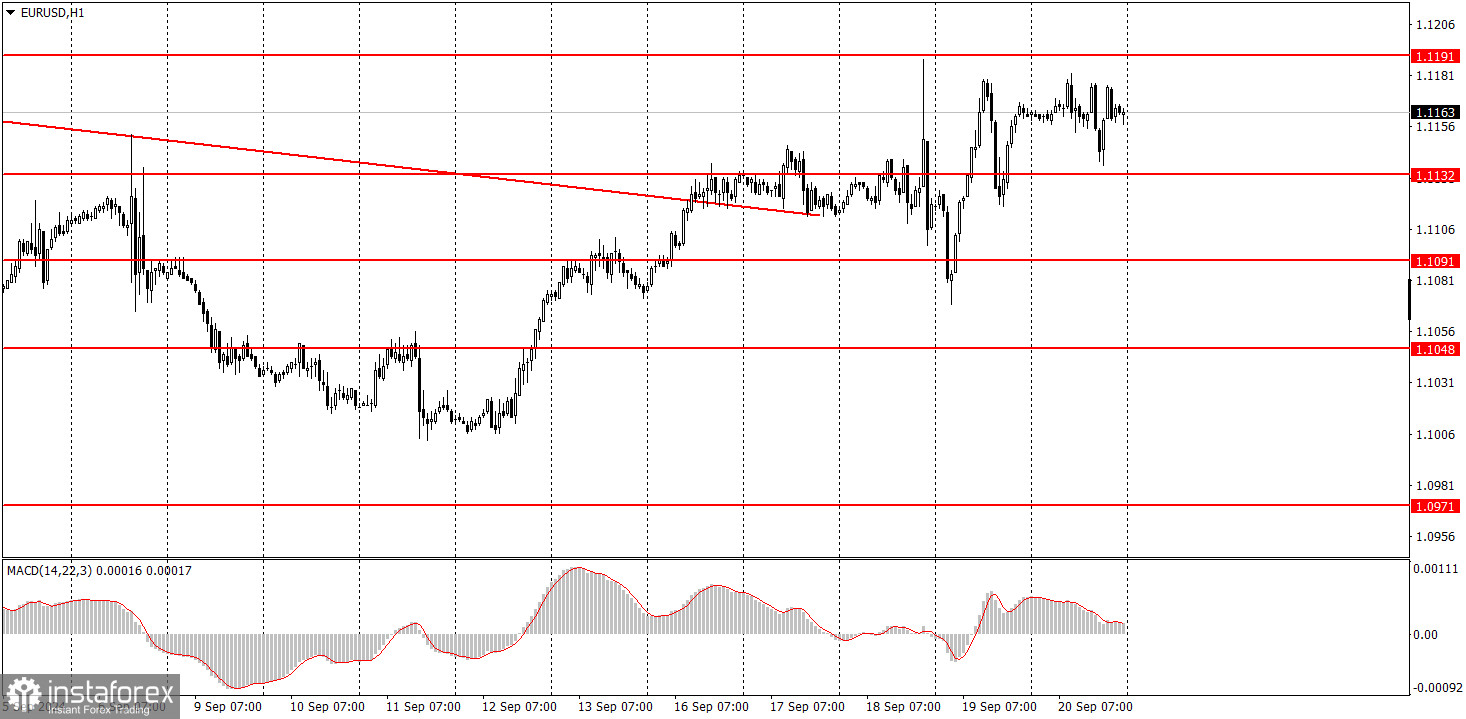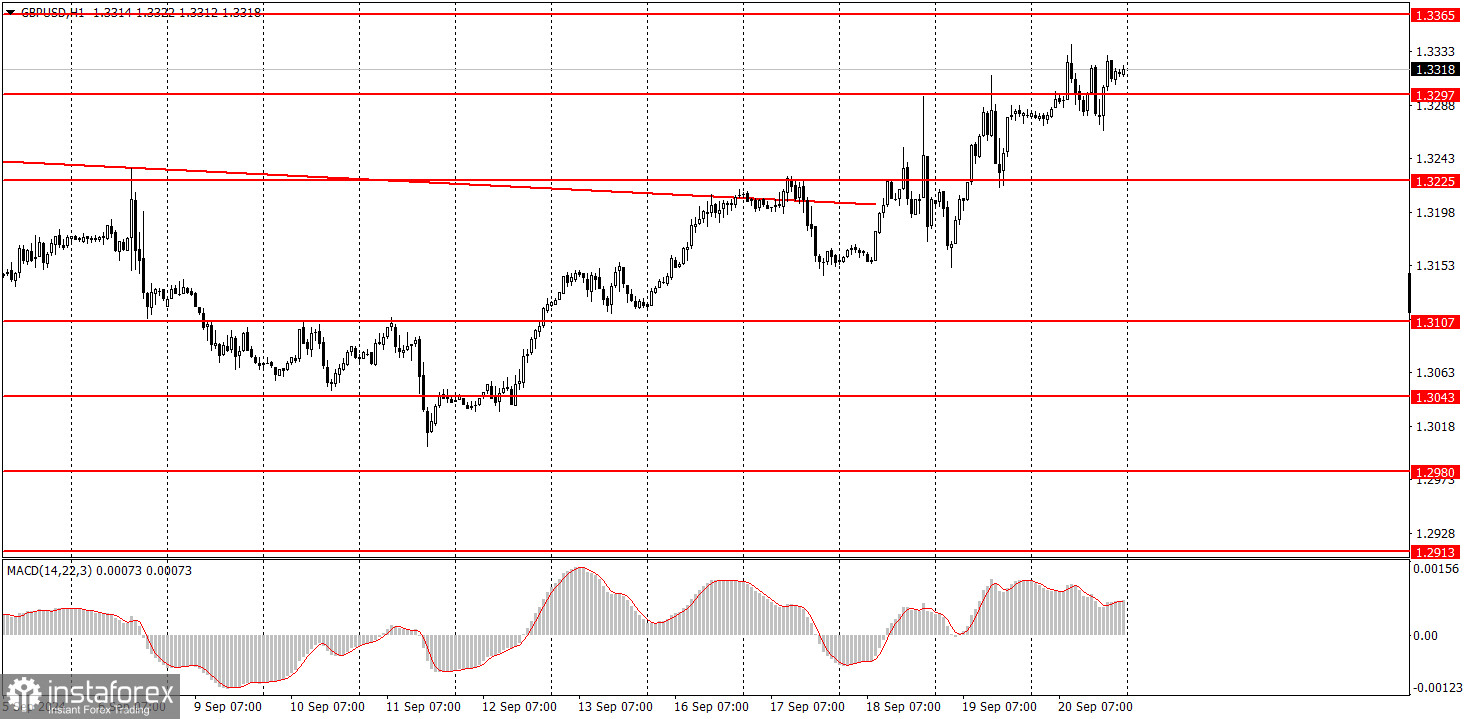Analysis of Macroeconomic Reports:

Quite a few macroeconomic events are scheduled for Monday, but they are all similar. In Germany, the Eurozone, the United Kingdom, and the United States, the September PMI (Purchasing Managers' Index) reports for the services and manufacturing sectors will be published. It's worth noting that the U.S. has its own internal ISM PMI indices, which are more significant. These indices are unlikely to drastically affect market sentiment, which continues to sell off the U.S. dollar consistently. The U.S. economy is in good shape, as Federal Reserve Chair Jerome Powell openly stated this week. If the market paid attention to this factor, the U.S. currency wouldn't constantly fall.
Analysis of Fundamental Events:

Among Monday's fundamental events, speeches by European Central Bank Monetary Committee members Elderson and Cipollone and Fed representatives Goolsbee and Bostic can be noted. However, since the meetings of both central banks have already taken place and all the most important information has been announced, it's unlikely that these officials will share any new significant information with the market.
General Conclusions:
On the first trading day of the new week, both currency pairs may continue to rise, start a correction, or trade within a local flat range. Currently, the macroeconomic background can only have a localized influence on price movements, and the market is using all fundamental factors to continue selling the U.S. dollar. Therefore, it is best to trade based on technical analysis while considering the potential minor impact of the PMI data.
Basic Rules of the Trading System:
1) The strength of a signal is determined by the time it takes for the signal to form (bounce or level breakthrough). The less time it took, the stronger the signal.
2) If two or more trades were opened around any level due to false signals, subsequent signals from that level should be ignored.
3) In a flat market, any currency pair can form multiple false signals or none at all. In any case, it's better to stop trading at the first signs of a flat market.
4) Trades should be opened between the start of the European session and midway through the U.S. session. After this period, all trades must be closed manually.
5) In the hourly time frame, trades based on MACD signals are only advisable amidst good volatility and a trend confirmed by a trendline or trend channel.
6) If two levels are too close to each other (5 to 20 pips), they should be considered a support or resistance area.
7) After moving 15-20 pips in the intended direction, the Stop Loss should be set to break even.
What's on the Charts:
Support and Resistance price levels: targets for opening long or short positions. You can place Take Profit levels around them.
Red lines: channels or trend lines that depict the current trend and indicate the preferred trading direction.
The MACD indicator (14,22,3): encompassing both the histogram and signal line, acts as an auxiliary tool and can also be used as a source of signals.
Important speeches and reports (always noted in the news calendar) can profoundly influence the movement of a currency pair. Hence, trading during their release calls for heightened caution. It may be reasonable to exit the market to avoid sharp price reversals against the prevailing movement.
For beginners, it's important to remember that not every trade will yield profit. Developing a clear strategy and effective money management is key to success in trading over the long term.





















